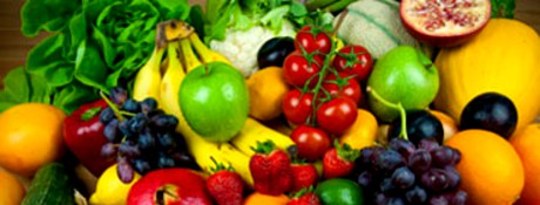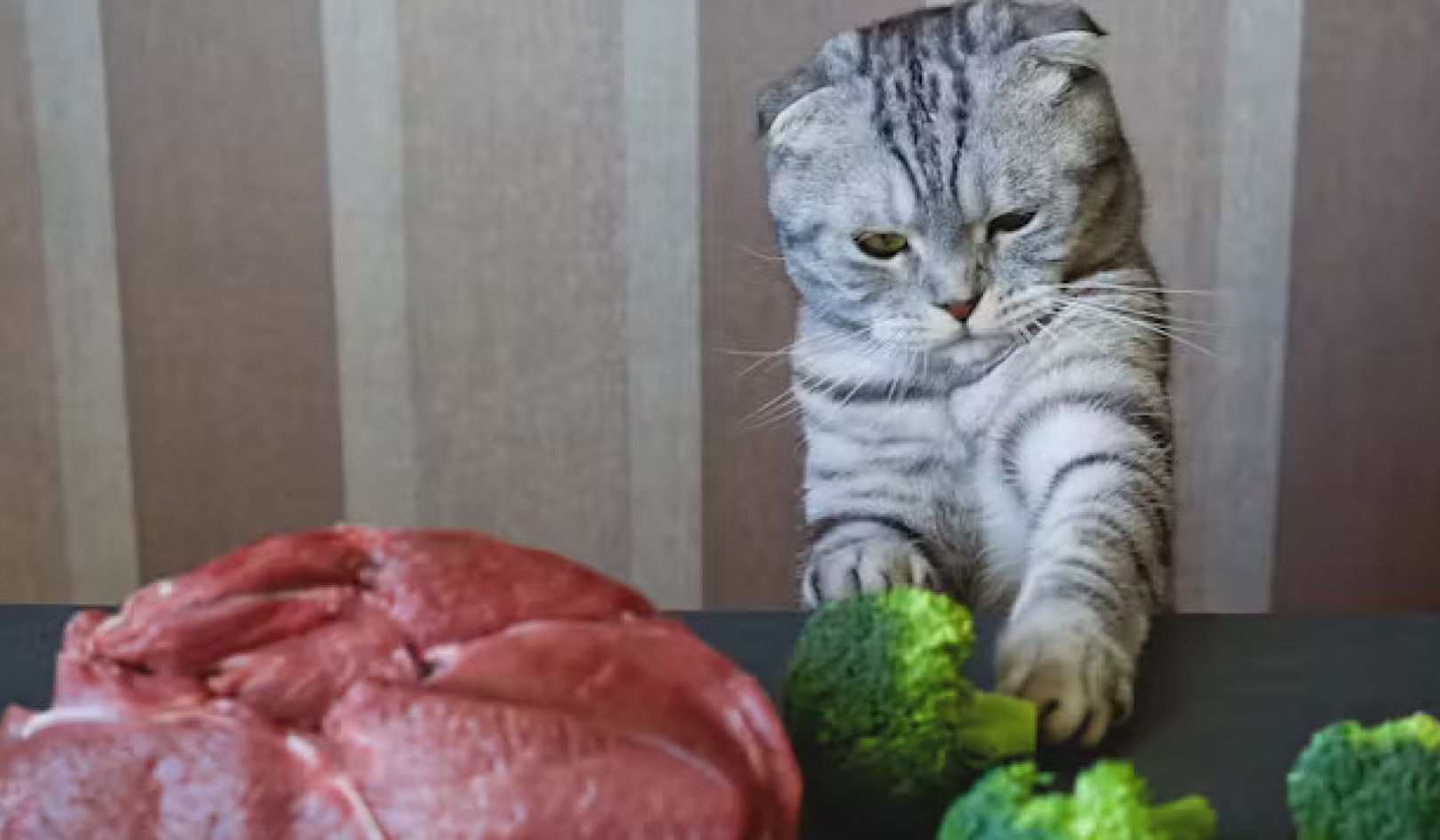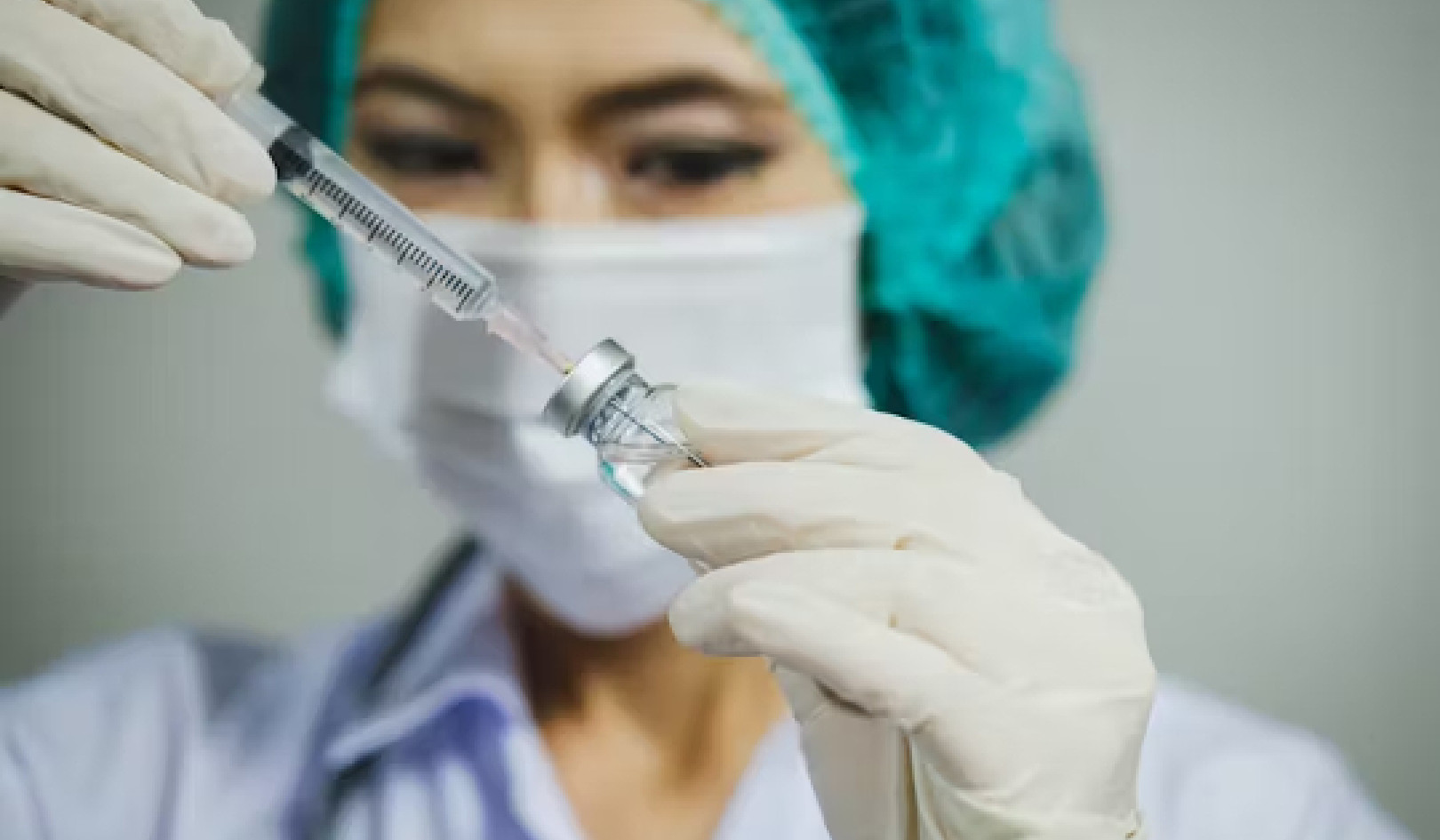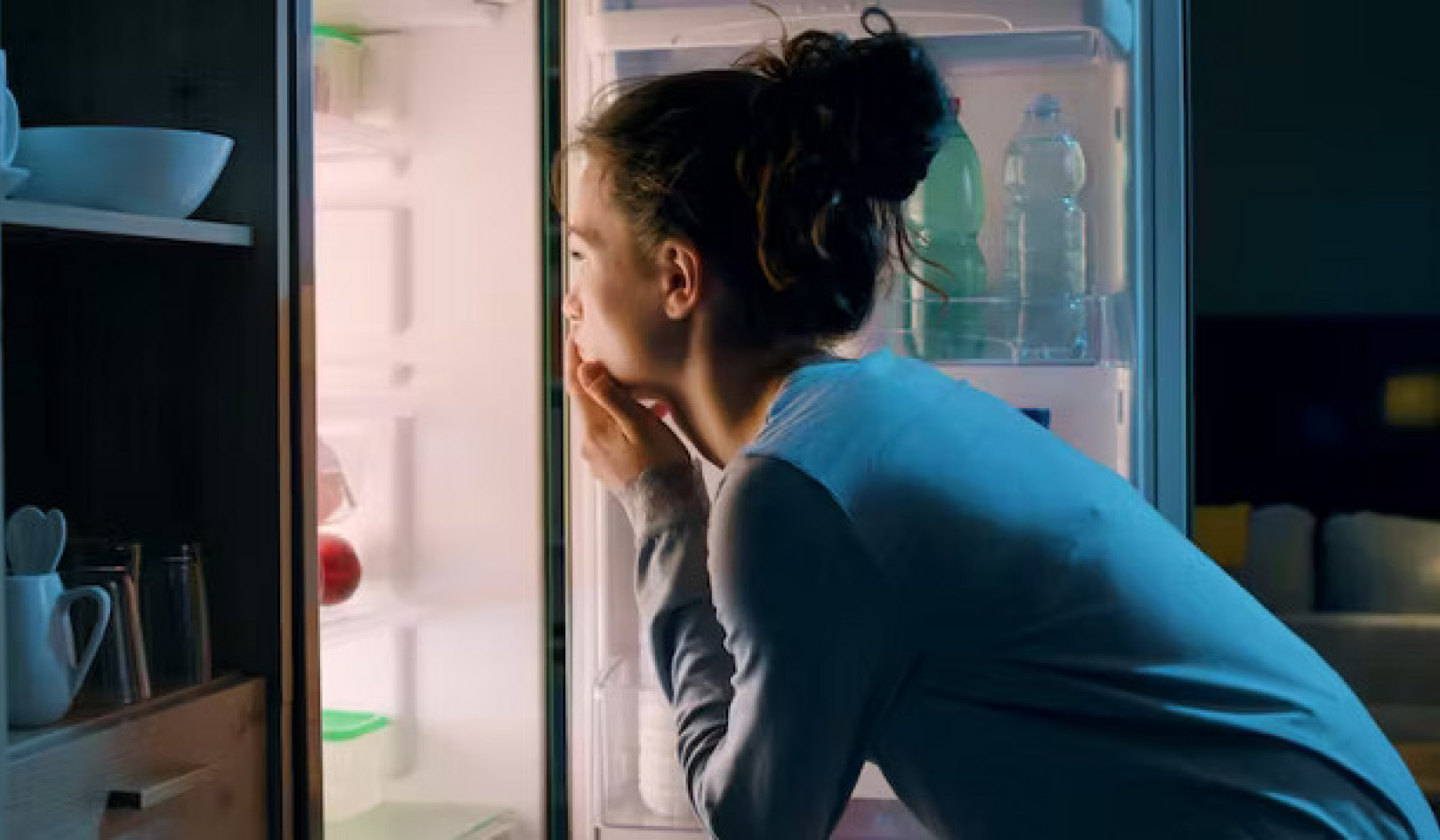
"If you don't take care of your body,
where are you going to live?" -- Anonymous
 ife isn't a bowl of cherries. But maybe it should be. Rich, deep-red cherries, mixed with luscious blueberries and succulent peaches, all bursting with flavor. Or fresh ears of golden corn from a roadside stand, rich with the scents of summer. Or bows and flows of angel-hair pasta, drenched in a tangy red marinara sauce. These foods, so enticing in their colors and scents, are also brimming with the promise of health.
ife isn't a bowl of cherries. But maybe it should be. Rich, deep-red cherries, mixed with luscious blueberries and succulent peaches, all bursting with flavor. Or fresh ears of golden corn from a roadside stand, rich with the scents of summer. Or bows and flows of angel-hair pasta, drenched in a tangy red marinara sauce. These foods, so enticing in their colors and scents, are also brimming with the promise of health.
We mean that literally. In the fifth century B.C., Hippocrates, the father of Western medicine, declared, "Let food be your medicine and your medicine be your food." The ancients had keen powers of observation. Pliny the Elder recorded no fewer than 87 medicinal uses for cabbage and 28 for garlic. The Romans found medical applications for lentils, grapes, and raisins.
The Sages of Old Were On To Something
The sages of old never tested their ideas with scientific studies as doctors do today. But we think they were onto something. Around the world, low-fat diets that are rich in fresh produce contribute to longer, healthier lives. In Japan, where the traditional diet consists of rice, soy, tea, fish, and a rainbow of colorful vegetables, people have the world's longest life expectancy. In rural China, where they eat a similar semi-vegetarian diet, the incidence of heart disease and certain cancers is among the lowest in the world. But a curious thing happens when Asians move to the United States and adopt the standard American diet, with all its high-fat junk food and empty calories. Their rates of cancer and heart disease soar.
The Asians are not alone. The Pima Indians in Arizona did not have a single recorded case of adult-onset diabetes while they subsisted on their traditional diet of wheat, squash, beans, cactus buds, squawfish, and jackrabbit. After Uncle Sam started sending surplus meat and cheese, however, their incidence of diabetes began to rise. Later, when they began chowing down on fast foods and typical American junk foods, half the adults over age 35 developed diabetes. Meanwhile, their Mexican cousins across the border maintained a traditional diet -- and traditionally low disease rates.
Colorful, Fresh Produce Is A Key Feature For Optimum Health
How can we explain these medical puzzles? Cutting-edge science has started piecing the answers together. And though the puzzle itself is exceedingly complex, the overall picture is pretty plain. It turns out that colorful, fresh produce is a key feature of any diet for optimum health. That's because fruits and vegetables, especially the most colorful ones, contain a bushel of disease-fighting compounds.
You don't have to search out Chinese bok choy or the cactus buds of Pima Indians. The Mediterranean diet, with its vibrant palette of foods, offers similar protection. Indeed, almost every colorful food -- from fresh-picked apples to cool green kiwis, bright red strawberries, and zesty, ripe oranges -- is loaded with disease fighters. Many of them are found in the pigments themselves. Consider:
* The natural dye that makes tomatoes red may help ward off prostate cancer. A Harvard study found that 10 servings of tomato products a week reduced the risk of aggressive tumors by nearly half.
* The crimson in sour cherries may alleviate your arthritis pain. Researchers in Michigan found sour cherries to be 10 times stronger than aspirin.
* The yellow in corn could protect your eyesight. Repeated studies have found that it helps prevent macular degeneration, the leading cause of blindness in people over 65.
* The golden pigment in curry powder can reduce inflammation. Researchers are now studying its potential to prevent colon cancer, which is often linked to inflammation.
* The blue in bilberries, a close relative of blueberries, appears to enhance night vision. During World War II, the Royal Air Force fed bilberry jam to British pilots to aid night missions.
* Perhaps most intriguing of all, the indigo pigments in blueberries may stave off the natural mental decline that occurs as we age. Jim Joseph, one of the co-authors of this book, has conducted groundbreaking research in rats, showing that blueberries slow and even reverse some damage to aging brains, improving the animals' short-term memory and coordination.
For these reasons and many more, we're not just speaking metaphorically when we say that these foods are part of a "color code" for healthy living. Many of the ailments that we've come to fear -- cancer, heart disease, diabetes, and osteoporosis, among others -- are not inevitable at all. They're consequences of how we live and how we eat. By fortifying our diets with colorful fruits and vegetables, we may prevent many of these diseases from striking in the first place. But to do that, we need protective benefits from the full spectrum of brightly hued produce. "It may be that the goal of five fruits and vegetables a day is really about color," says John SauvT, executive director of the Wild Blueberry Association of North America. "You can paint the image of health, but you need all the colors to do that -- red, green, orange, and blue -- some of each every day."
Think of it as pigment power.
Food for Life
 There are many reasons to eat colorful foods. In addition to pigments, plants contain a broad range of compounds that impart flavors and scents and fight off bugs. Known collectively as phytochemicals (from the Greek word phyton, "plant"), these chemicals technically include such familiar substances as proteins, carbohydrates, vitamins, and minerals. But in the popular usage -- which we will conform to in this book -- the word "phytochemicals" usually refers to the other substances that make up the rest of what's in a plant. Plants manufacture those compounds to protect themselves against a variety of dangers, ranging from solar radiation to menacing microbes. The great thing is, these vegetable defenders turn out to protect people, too, against a whole host of ills.
There are many reasons to eat colorful foods. In addition to pigments, plants contain a broad range of compounds that impart flavors and scents and fight off bugs. Known collectively as phytochemicals (from the Greek word phyton, "plant"), these chemicals technically include such familiar substances as proteins, carbohydrates, vitamins, and minerals. But in the popular usage -- which we will conform to in this book -- the word "phytochemicals" usually refers to the other substances that make up the rest of what's in a plant. Plants manufacture those compounds to protect themselves against a variety of dangers, ranging from solar radiation to menacing microbes. The great thing is, these vegetable defenders turn out to protect people, too, against a whole host of ills.
For example, certain phytochemicals activate genes that help the body fight cancer. Scientists are starting to think of them as a form of gene therapy -- but before any disease has developed. "Gene therapy has become the buzzword in cancer treatment," says Dr. Andrew Dannenberg, director of cancer prevention at New York Presbyterian Hospital-Cornell Medical Center in New York. "It's high tech and elegant, but it's also expensive and unavailable. On the other hand, each and every day, you eat. It might just be that the most effective form of gene therapy is diet. It can keep you from getting sick in the first place."
With all this health-promoting power, phytochemicals are the most exciting thing happening in nutrition today. For years, we've known about vitamins, minerals, and fiber. Those are all good substances -- great substances -- but now we know there's even more to a healthy diet than vitamins and minerals. There's also the disease-busting strength of phytochemicals. You can't get this protection out of a bottle, but you can get it from a diet rich in colorful produce.
This new way of thinking represents nothing short of a revolution in nutrition. It's not good enough just to extract vitamins and minerals from foods and put them into pills. If you do, you're getting only part of the life-preserving package that nature gave us. You're missing out on a wealth of natural defenders that can help guard against everything from blindness to cancer.
Defensive Eating
It's hard to go wrong if you fortify your diet with colorful foods. Almost every one of them is loaded with disease-proofing compounds. Take blueberries. Until recently, these diminutive fruits were written off as nutritional weaklings. Now scientists are having to eat their words. A USDA database reveals that blueberries contain more than a dozen vitamins and minerals in small amounts. They pack fiber. And they contain nearly 100 phytochemicals, including the stubborn dyes that stain your mouth and sometimes your shirt. Just one of these phytochemicals falls into the following protective categories, according to a USDA database: "analgesic, antibacterial, anticancer, anti-inflammatory, antioxidant, antiseptic, antisunburn, antiulcer, [and] immunostimulant." Harness those in your diet, and you've achieved what Elizabeth Ward of the American Dietetic Association calls "defensive eating."
And that's just one fruit. Imagine what you can do with a whole diet full of this brightly colored stuff. People have gotten used to thinking of fruits and vegetables as delivering one nutrient or another. Oranges, vitamin C. Bananas, potassium. But the reality is that every fruit and vegetable is a complex disease-fighting machine. A glass of orange juice contains 170 phytochemicals -- not to mention potassium, thiamin, folate, and hefty amounts of vitamin C. Carrots contain a total of 217 compounds. Apples, at least 150. The bottom line is that your mom was right, even if she didn't know why. The old folk wisdom that you should include green and orange vegetables in your daily diet was absolutely correct. It just didn't go far enough. Today we know that you should also include a daily sampling of red, purple, and blue -- the more colorful, the better.
Mind-Bending Evidence
With every passing year, mind-bending new evidence adds support to the wisdom of eating a color-packed diet. The truth is that if greengrocers had the marketing muscle of drug companies, we would all be racing to try this miracle regimen. Patients would demand that their doctors prescribe it. Consumers would flock to the produce aisles to snap up these lifesaving foods. We say this with absolute conviction.
We, the three authors of this book, have performed different, but related, work. Jim Joseph has conducted original research on the benefits of the most intensely colored fruits and vegetables. Dan Nadeau has treated patients, using a colorful diet as one path to health. Anne Underwood has combed the published literature on phytochemicals and spoken to hundreds of experts across the country. Again and again, the same bottom line emerges: whole foods -- colorful foods -- deliver protection against a broad range of ailments. And the reason comes back to the cornucopia of pigments and other phytochemicals they contain.
The research may be complex, but the take-home message isn't. Our philosophy can be summed up in the simplest of mottos: Think health, think color!
Reprinted with permission of the publisher,
Hyperion, New York. ©2002. http://www.hyperionbooks.com
Article Source:
 The Color Code: A Revolutionary Eating Plan For Optimum Health
The Color Code: A Revolutionary Eating Plan For Optimum Health
by James A. Joseph, Ph.D, Daniel A. Nadeau, M.D., and Anne Underwood.
Color cures! That's the simple premise behind The Color Code. While we all know that healthy eating is the key to a long life, few people understand why the natural pigments that give fruits and vegetables their color can help protect your body, too. Combining their expertise in aging and nutrition, a leading scientist and an outstanding physician show readers how to prevent the most common age-related illnesses through a simple multicolored eating plan. For generations, parents have been telling their children to eat their fruits and vegetables--The Color Code finally tells why.
Info/Order this book.
About the Authors
 JAMES A. JOSEPH, PH.D., is lead scientist and lab chief of the Laboratory of Neuroscience of the USDA Human Nutrition Research Center on Aging at Tufts University. He has held positions at the National Institutes of Health, and has won several grants and awards in the area of gerontology. He lives in Plymouth, Massachusetts.
JAMES A. JOSEPH, PH.D., is lead scientist and lab chief of the Laboratory of Neuroscience of the USDA Human Nutrition Research Center on Aging at Tufts University. He has held positions at the National Institutes of Health, and has won several grants and awards in the area of gerontology. He lives in Plymouth, Massachusetts.
DANIEL A. NADEAU, M.D., is clinical director of the Diabetes Center and Nutrition Support at the Eastern Maine Medical Center in Bangor and assistant professor at Tufts Medical School. He lives in Hampton, Maine.
ANNE UNDERWOOD is a reporter for Newsweek, where she has been writing about health and medicine issues for seventeen years. She lives in Hoboken, New Jersey.






















